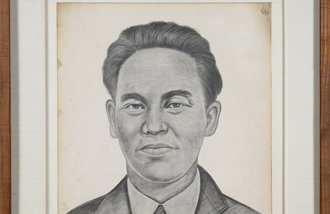Stream Improving Seouls Air Quality
Stream Improving Seouls Air Quality
Posted September. 26, 2006 07:02,
Mr. Heo, 50, who has been running a shop in Cheonggye 4-ga for 23 years, suffered from bronchitis for several decades. But he stopped taking medicine a year ago as he did not cough any more.
He said, The air feels clear after Cheonggye Elevated Highway was removed. These days, I usually take a walk around Cheonggye Stream after closing the shop.
It has been a year since Cheonggye Stream, also known as Cheonggyecheon, was restored. Since the restoration, the ecosystem in the center of Seoul is reviving. The amount of particulate matter in the air has decreased, and animals and plants have been returning to the city after the 5. 84km-long stream was restored from the Donga Media Center (Dong-A Ilbo headquarters building) in Sejongno, Jongno-gu to the Shindap Railroad Bridge in Majang-dong, Seongdong-gu.
The amount of particulate matter in the air has dropped significantly
After the restoration, the amount of particulate matter (PM10) and nitrogen dioxide (NO2) reduced as much as 27% compared to the pre-restoration period.
PM10 and NO2 are emitted from cars running by gasoline and are harmful to human beings. They can cause respiratory diseases.
This paper and the Seoul Metropolitan Government measured the amount of particulate pollutants at six places including Cheonggye Stream (at the street of Baeogae Bridge in Cheonggye 4-ga), Cheongryangri and Dongdaemun Stadium from September 2005 to August this year, and compared it with that of between September of 2001 and August 2002, the pre-restoration period.
Before the stream revived, an average of 86μg (microgram, 1μg equals one millionth gram) particulate matter per m³ was on the air. But it dropped to 63μg, a 27% decrease.
The streams surrounding should be natural
Environmental experts are paying attention to the fact that Chinese minnows, which inhibit the clearest water, live under the waterfall near Cheonggye Square from which the restoration started. Ahn Byung-ok, Subhead of Citizen Environment Research Center, a civic environment group, said, When we first found Chinese minnows at the upper part of the stream, we thought they would not stay there long because the part is straight-shaped -- not a good place for fish. But we were wrong.
So far, Chinese minnows were only found in Baekundong Stream in Mountain Inwang and in Junghak Stream in Mountain Bukak, two sources of Cheonggye Stream. But, the fish living under Cheonggyecheon show that the ecosystem between the streams source and Han River is reviving.
The streams ecosystem was enriched after the rainy season this summer.
According to the research by Seoul Metropolitan Facilities Management Corporation from August to the early September, the number of the kinds of fish under the stream rose from 16 before the season to 23 including squalidus gracilis majimae and acheilognathus yamatsutae. The number of fish also quadrupled.
Kim Woon-soo of the Seoul Development Institute said, As a variety of animals and plants gather to the stream, more and more fish and birds living on them inhabit the area, forming a natural food chain.
Experts, however, view that the environment surrounding Cheonggyecheon should become natural so that the ecosystem can be maintained even after more than a decade.
Professor Noh Soo-hong of Civil & Environmental Engineering of Yonsei University indicated, The stream between the upper part and 1km from it is artificially constructed. We should revive the ecosystem by restoring the waterway from the source to the stream.
beetlez@donga.com gaea@donga.com







